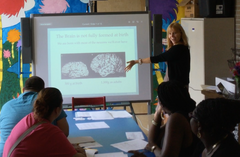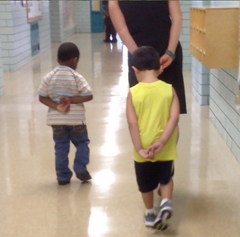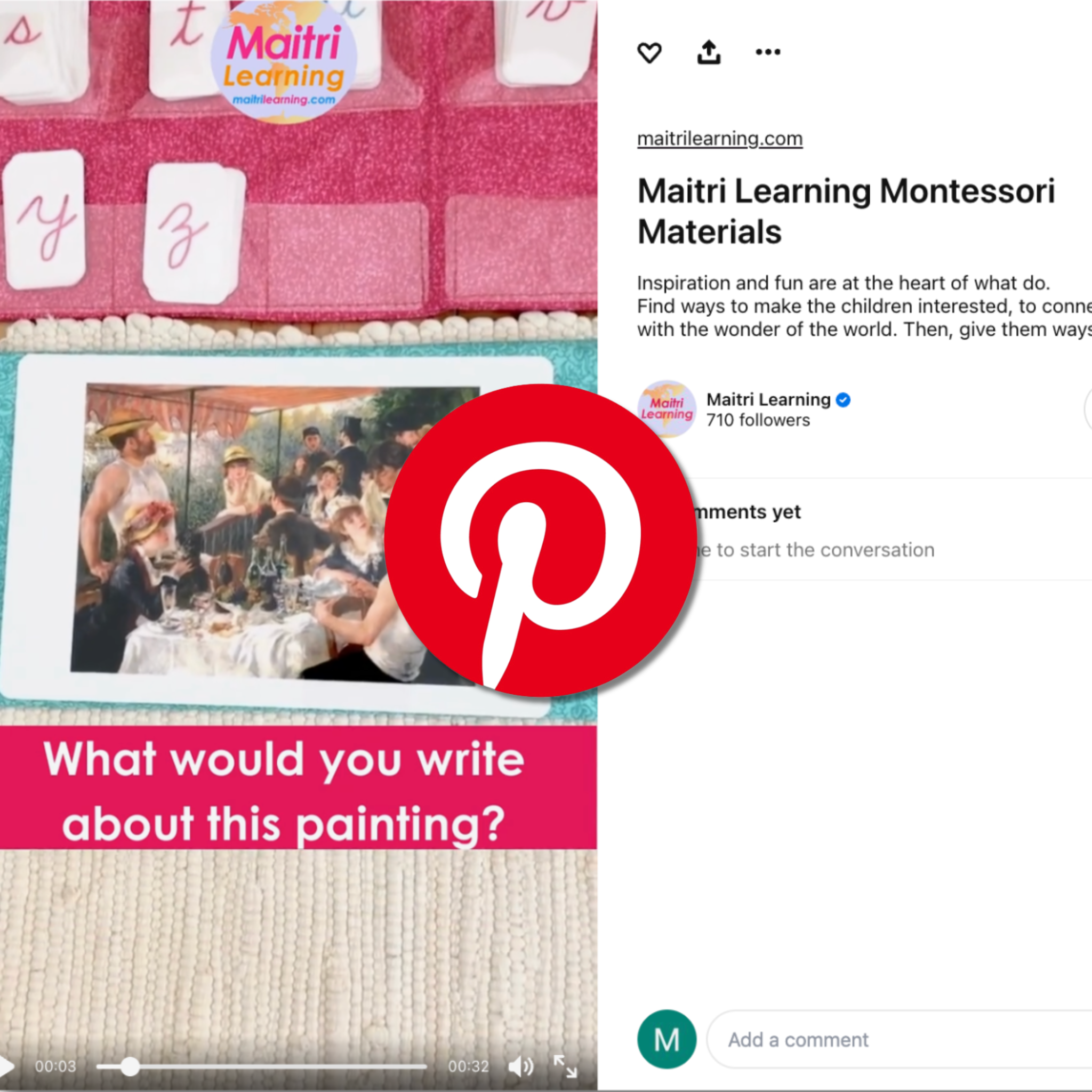Preschool Orientation...No More Crying on the First Day of School!
For the last five years ago, I've been working with Zanetti public Montessori school in Springfield, MA to start and run a student and family orientation program. We just completed its fifth year... it is such a success that teacher's continue to donate two days of their prep time each August to keep it going. The big benefits are:
-
 New preschoolers feel comfortable the first day of school
New preschoolers feel comfortable the first day of school - Families understand the logistics of drop-off/pick-up, backpack contents, and school communication
- Families are much more supportive in helping their children get enough sleep and exercise outside of school
- Families are more willing to reduce screen time (YES)
- Children are supported by families as they learn to be more independent in daily living tasks
- Children are invited more into the daily tasks of maintaining a home (e.g., folding laundry, making meals, cleaning up, etc.)
- Teachers get to screen new students to make sure they are school ready (e.g., they can toilet independently)
- Teachers get to screen new students for possible individualized educational support (e.g., speech therapy, occupational therapy)
The Agenda
So how did we do this? We called all new families in for a mandatory appointment. During their appointment time, each child is brought to his/her classroom to meet the teacher and get a one-on-one introduction to several materials as well as classroom logistics (cubby, bathrooms, sinks, etc.). While the children are with their teacher, the families join a mentor/administrator for a brief talk on daily logistics and how to support optimal brain development. Including arrival time, this takes about 35-minutes (including a 25-minute talk).
When the talk is done, the parents go down to meet their child and teacher while the mentor/administrator goes from class to class inviting the children to come on a quick walking tour of the school. This gives the parents some one-on-one time with the teacher and gives the children a chance to see more of the school building.
The Walking Tour
This is the funnest part because most of these children have never walked in a line before...it's like herding cats at first. By the end of the tour, their walking in line like pros.
I've learned that it works best to just hold their hands and walk casually with the group until you are around the corner from the classrooms (where they can't see their parents). Before turning the corner, we stop at the mural to talk about how former students painted it and to let these new little students describe what they see. Then, we turn the corner and talk about the second mural followed by looking out the windows at the playground. After this, they're ready to get in a line.
I tell them that at school, we always like to walk in line. I point to the line separating a column of tiles on the floor and tell them, "This is a line." Then I point to a few more and say, "This is another line." Then I say, "I'm going to walk on this one. See if you can walk behind me on the same line I'm walking  on. I'm the line leader so I'll go first. You can follow me." I also make a point of emphasizing how I place my hands behind my back when in line (the custom at this school).
on. I'm the line leader so I'll go first. You can follow me." I also make a point of emphasizing how I place my hands behind my back when in line (the custom at this school).
We practice the line for the rest of the tour, down the hall to the gym, through the cafeteria, and back to their classrooms. When the time is right, I tell them how we love to be quiet when walking in line. We're so quiet, sometimes people don't even hear us coming. This introduction makes it much easier for them to walk in lines right away on the first day of classes while maintaining a calm, hallway atmosphere for the whole school.
Preparing your own orientation
Interested in setting up something like this for your school? Read on.
Step 1: Get your list of new families together in July. Assign all students to their classrooms and then send out orientation letters that include a scheduled, "mandatory Preschool Screening appointment." We schedule these at 8:30, 9:30, 10:30, 12:00, 1:00 and 2:00 for two-three days the week before school starts.
When you create the schedule, invite only one family per teacher for each time slot. So, for example, if you have six children's house classrooms, you would invite six students and their families for the 8:30 slot on Tuesday, six more families for the 9:30 slot, and so on. When you set up these appointments, try to schedule families with twins/siblings in the same time slot whenever possible. You might also want to leave one open time slot for reschedules (see step 3 below).
Step 2: Assign a mentor or administrator to prepare a 25-minute talk for the adults. You can see an example of the talks I've given (and can now give in my sleep); the first part is on logistics and the second is on brain development. You'll really need to create your own set of slides/talking points so it is customized to your school's needs but you might want to hit these killer take-aways:
Best ways to help your child's brain:
- Help them to do things for themselves
- Be who you want them to be: a Role Model
- Early bedtime: 10-13 hours of sleep/night
- Get outside and play each day
- As little screen-time as possible (especially not during meal times)
- Read together before bed
Step 3: Be flexible. You will have new enrollees and some children falling off your list. Be ready to slip everyone in for new appointments. And expect some people to be tardy. Have an extra staff member available to help latecomers get to where they need to go.
Step 4: Prepare your handouts. I like to give out some guidance on developmental milestones and the types of independent activities children can do at different ages.
Step 5: Do a dry run with your staff. Give them the talk you plan to share with the families and then walk through the things they're going to do with the children. This is your chance to guide them (if needed) to make sure the children are prepared with the critical first things they need to know (aka, how not to flood the sink or clog the toilet).
Step 6: Bring enough coffee for yourself for the whole day! You won't have time to share snack/coffee with the families if you follow our schedule but if you are the mentor/administrator, your throat will be utterly parched by the 12:00 talk! Water and tea work too (I bring iced decaf with soy...yum). Remember that you have to keep your spirit and energy up and fresh for each new group that comes in. You could also schedule a longer amount of time to add 15 or 20 minutes at the end of each session for families to gather for refreshments and to chat. That would be great for community-building.
That's all there is to it. I also recommend that you film a few sessions so you can share them with anyone who didn't have a chance to come. If you do, be sure you get permission from each family before your start filming.

 New preschoolers feel comfortable the first day of school
New preschoolers feel comfortable the first day of school






1 comment
Your practical advice for preschool orientation ensures a smooth start for children and parents alike. Thank you for your valuable insights
simhakidsden
Leave a comment
This site is protected by hCaptcha and the hCaptcha Privacy Policy and Terms of Service apply.